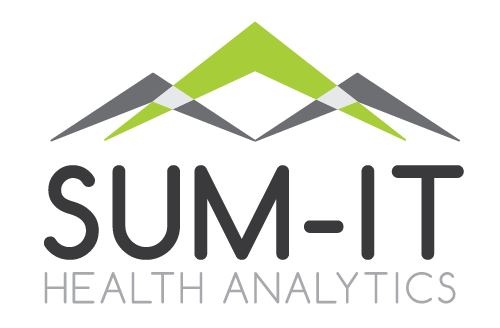Miriam Isola, DrPH CPHIMS and Kathy Schneider, PhD
Now that investments have been made and electronic medical records (EMRs) are prevalent throughout the US healthcare system, healthcare organizations (HCOs) are challenged to get value from their investments. EMRs not only digitize patient information, they function as data collection tools, helping to structure patient information and they have some obvious benefits such as:
Ubiquitous availability of records. Remember the days of 75% record retrieval rates? Records could be found anywhere throughout the clinic or somewhere between the hospital Medical Records department and the clinic, or in the physician office. We now have quick access to 100% of the records – and remote access to records is possible.
Improved safety through e-prescribing and use of computerized provider order entry (CPOE) which make the drug order clear and legible. Safety is further enhanced through clinical decision support (CDS) to assist with appropriate medication selection
But this is not where the investment in EMRs will lead to positive return on investment (ROI) to HCOs, providers, and ultimately not where benefits to patients will accrue. Over the past 3-5 years increasing numbers of HCOs have begun to work on using the patient data they are collecting to meet the Triple Aim goals[1] of improving quality and patient experience and reducing costs. It is now widely accepted across the healthcare industry that using analytics to drive decision making and taking a true population health approach will lead to a new level of evidence-based, patient-centered, consumer-oriented, cost-managed healthcare system.
“Top-Down” - Building Infrastructure
Relying on EMR and analytic systems to meet transformation goals is a “Top-Down” approach with a focus on building infrastructure. These investments require major purchases of technology such as an enterprise data warehouse, business intelligence software, analytic tools and participation in a Health Information Exchange (HIE). A large ROI is needed to recoup these investments and make the effort worthwhile. Additionally, project timelines to implement infrastructure can span multiple years, and can delay ROI while the organization waits to use their data.
While top-down approaches are foundational to developing analytic capabilities and are ultimately needed to accomplish the overall strategic goals of becoming data-driven, focusing exclusively on building infrastructure detracts from the ability to begin using the data that is available for population health interventions. Furthermore, a top-down approach can be risky: (a) since it is designed to meet long-term needs – but does not address immediate information needs, and (b) it may not be nimble enough to address strategic objectives that aren’t envisioned at the time the systems solution is implemented. The major objective is to begin using the data to impact health outcomes. By focusing only on a top-down approach, organizations may find themselves in the position of building an air craft carrier, which will take years to be ready and then they find they cannot easily maneuver or turn if the target has shifted. Sometimes a smaller more agile watercraft is what is needed.
A “Bottom-Up” Approach
Smaller HCOs don’t always need solutions that are designed for big data. Instead they could benefit from flexible solutions that don’t require a large up-front investment. Often, smaller organizations have micro-teams that know the organization, the strategic direction, and even the patients. These groups find it useful to develop partnerships with firms that have deep data and analytic expertise, to focus on developing strategic application of analytics to obtain actionable information for improvement efforts and address organizational priorities.
Why wait to begin leveraging your mountain of data to produce actionable insights? Instituting a complementary “Bottom-Up” approach that is nimble, adaptable and helps meet both short-term and long-term goals is a logical course of action. We recommend piloting some immediate projects to explore data trends and outliers to look for areas in need of change. Data discovery can quickly reveal needed interventions and can provide clues for strategic analytics to further target improvement efforts.
Gaining insight into the entire population helps HCOs to better understand how to prioritize organizational resources. Combined with strategic analytics for specific risk groups, this provides a “Bottom-Up” approach that complements Top-Down efforts (Refer to the illustration of Top-Down and Bottom-Up Approaches in Figure 1). Why not take action by implementing smaller, meaningful, targeted, data-driven interventions? A population health approach designing interventions that can be in place quickly and make a difference within 3-6 months is a Bottom-Up approach that can be pursued as a parallel path along with the foundational infrastructure that will ultimately be required.
Figure 1
How we work with clients
At Sum-IT Health Analytics, we use a “Bottom-Up” approach to create custom analytic solutions designed to address specific organizational priorities. This targeted approach helps our clients to quickly use their data for interventions. Analytics will reveal opportunities for taking action to impact health outcomes and begin to realize ROI. Our focus is to consolidate your mountain of information – distill it and make it accessible and understandable to clinical experts and decision-makers so it can be translated into action. In today’s rapidly-evolving healthcare marketplace, where payer incentives and penalties are changing rapidly – the time to act is now!
Collaboration, Experience, Innovation – At Sum-IT Health Analytics, we work to develop an ongoing relationship with our clients. Our approach is to measure, report and discuss strategic actions with our clients at key milestone during the project; to conduct iterative waves of re-measurement; reporting and interventions may follow – depending on your objectives and timeline.
[1] US HHS. National Quality Strategy. 2011(http://www.ahrq.gov/workingforquality/nqs/nqs2011annlrpt.htm)

